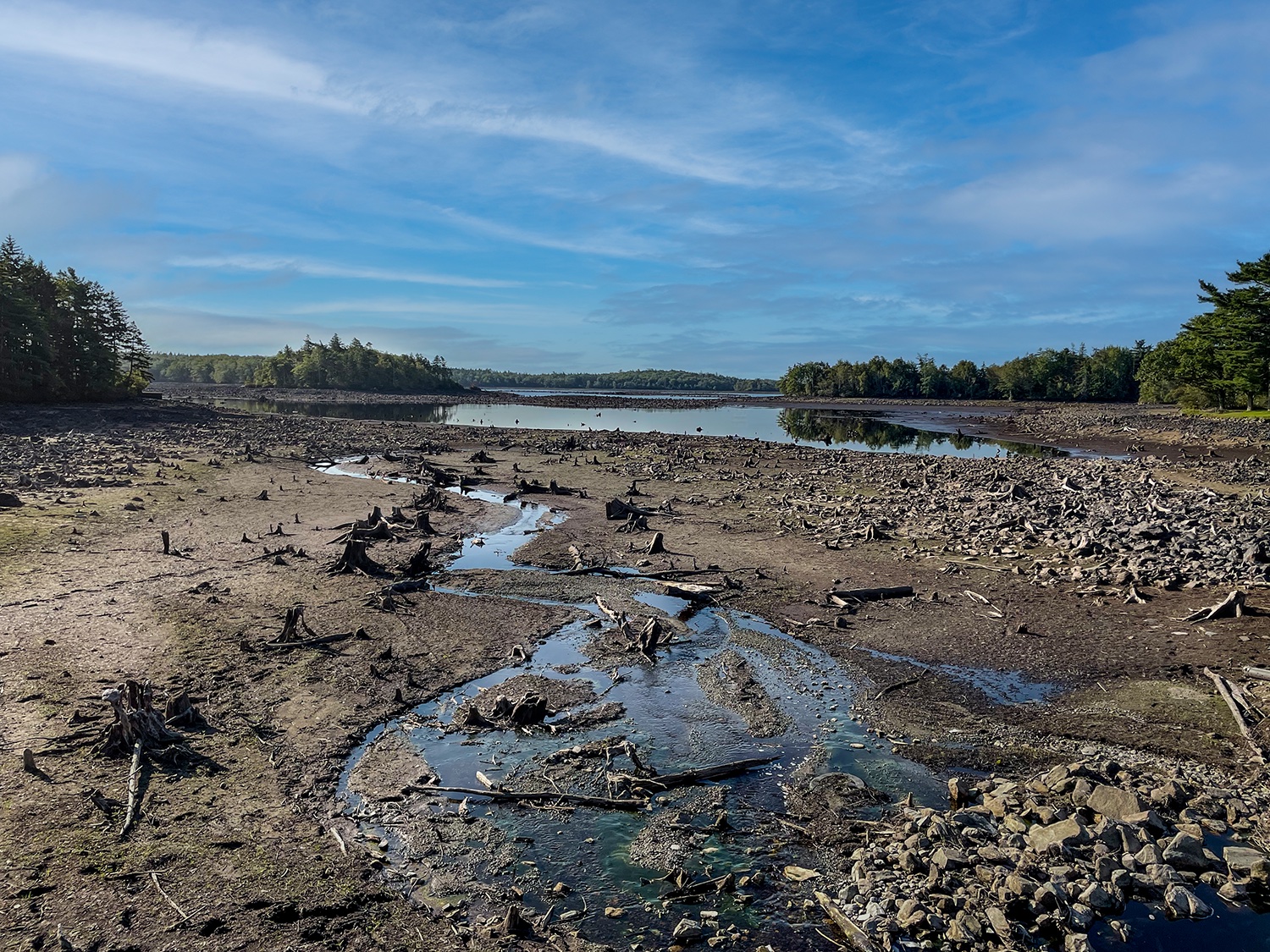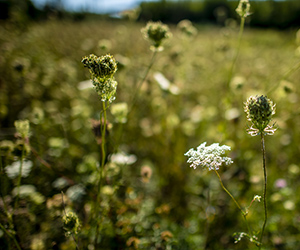
The Culvert with Lake Vaughn Drawn Down
Dam
As a conservation photographer, when I get to take an image I know will show something that isn’t normally seen, it normally makes me very happy. Sometimes, however, the feeling is the opposite – a feeling of loss or knowing that an image I’m taking is of a major change.
This week, I drove down to what as a kid was probably my very favourite fishing hole. Known within the family as “the Culvert”, the spot on the Tusket River has been in my life since birth. The man we called Uncle Roy (actually the spouse of my grandfather’s half sister, so technically half great uncle to me) was a fascinating man, a blacksmith turned veterinarian, and a very, very good fisherman. Uncle Roy and Aunt Alice had a fishing camp on the Tusket, very near to the Culvert, but in Uncle Roy’s youth, the river would have looked very different then it normally does today. Uncle Roy’s camp was built before a major change to the river happened, it was built before the power dam went in on the river in 1929.
Uncle Roy’s camp had on the walls a record of some of the fish he caught there, and I remember seeing the list and being impressed. After the dam went in, Lake Vaughn was created and the Atlantic Salmon population declined dramatically, despite a fish ladder on the dam. As a child in the 1960s, we used to make the short drive to the Culvert from our summer cottage in Deerfield, and found that it was still a good spot for trout (and maybe an eel or a perch). With the dam in place, the river at the Culvert, though, was a lake and we were actually fishing where a small brook entered the system flowing under the road.
In the 1970s, the acid rain from the Eastern US and Ontario took its toll and the brook trout declined and the salmon were almost wiped out completely. The job was finished when in the 1980s chain pickerel and smallmouth bass were illegally introduced into the Tusket system, extirpating the salmon and diminishing the trout population even further.
It was interesting this week, then, to drive by and see that NS Power is doing repairs to the dam, and so they drew down the water to the pre-1929 levels. The image is from where we fished, it’s the Culvert, but as one can see, there is no real water here, with the main river way in the background.
Hydro-power is referred to as “green” as it doesn’t emit CO2 gas, but to say it doesn’t impact the environment is a gross mischaracterization.
Uncle Roy died in 1971. I have his old salmon rod, and his gaff hangs in an exhibit at Kejimkujik National Park. I wonder what he’d think of seeing the river the way he used to see it as a young man, but I can’t help but think he’d be very sad to know that there are no more salmon.
We need to remember that the things we do in the name of progress often have long term consequences indeed.










































